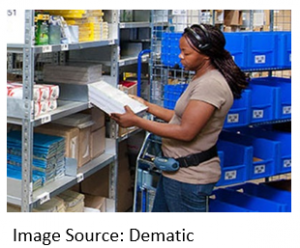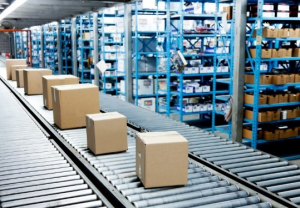
By Ian Hobkirk
Managing Director of Commonwealth Supply Chain Advisors
Tactic #3: Determine Overall Pick Strategy
Vehicle-Based Systems
Many companies may already be performing this type of picking. They may be using electric pallet-jacks for floor-level picking or “man-up” order-pickers for multi-level picking. Neither of these vehicles lends itself particularly well to picking low-cube items to discrete orders. Manual picking carts, while not likely to win any technological awards, are the lynchpin of many piece-pick distribution centers, even those with high volumes of business. A key to effective cart picking is using the right cart design. There are seemingly infinite configurations of shelves to suit every picking need. It may be wise to purchase a few different designs as “prototypes” to test out in the warehouse before making a larger purchase.
- Inexpensive
- Flexible
- Easy to add additional labor at peak periods
- Potential ergonomic issues
- Passing batches between zones is harder than with conveyors
- May be long travel distances to packing area
Conveyor-Based Systems
- Well suited for large distribution centers with multiple zones
- Ties into automated packing systems well
- Operators can focus on picking, not transporting
- Can usually add labor in peak periods
- High upfront cost
- Less flexible than carts
- Not all SKUs are conveyable
Goods-to-Picker Systems
There are a wide variety of goods to picker systems available, including vertical and horizontal carousels, vertical lift modules, automated storage & retrieval systems (AS/RS), and robotic picking systems. Each has their relative merits, depending on the type of goods being picked and the outbound velocity patterns. Goods-to-picker systems offer the fastest pick rates of all three picking strategies, but are also the least flexible if business needs change. A potential middle ground exists now with the advent of robotic picking systems. These systems involve armies of robots bringing shelving pods to pickers and then putting them away again after picking is done. (In the third segment of this blog we’ll discuss each type of goods-to-picker systems in more detail.)
- Ultra-high pick rates
- Excellent space utilization
- High upfront cost
- Very inflexible if needs change
- System efficiency is highly dependent on the capabilities of the software controlling it.



